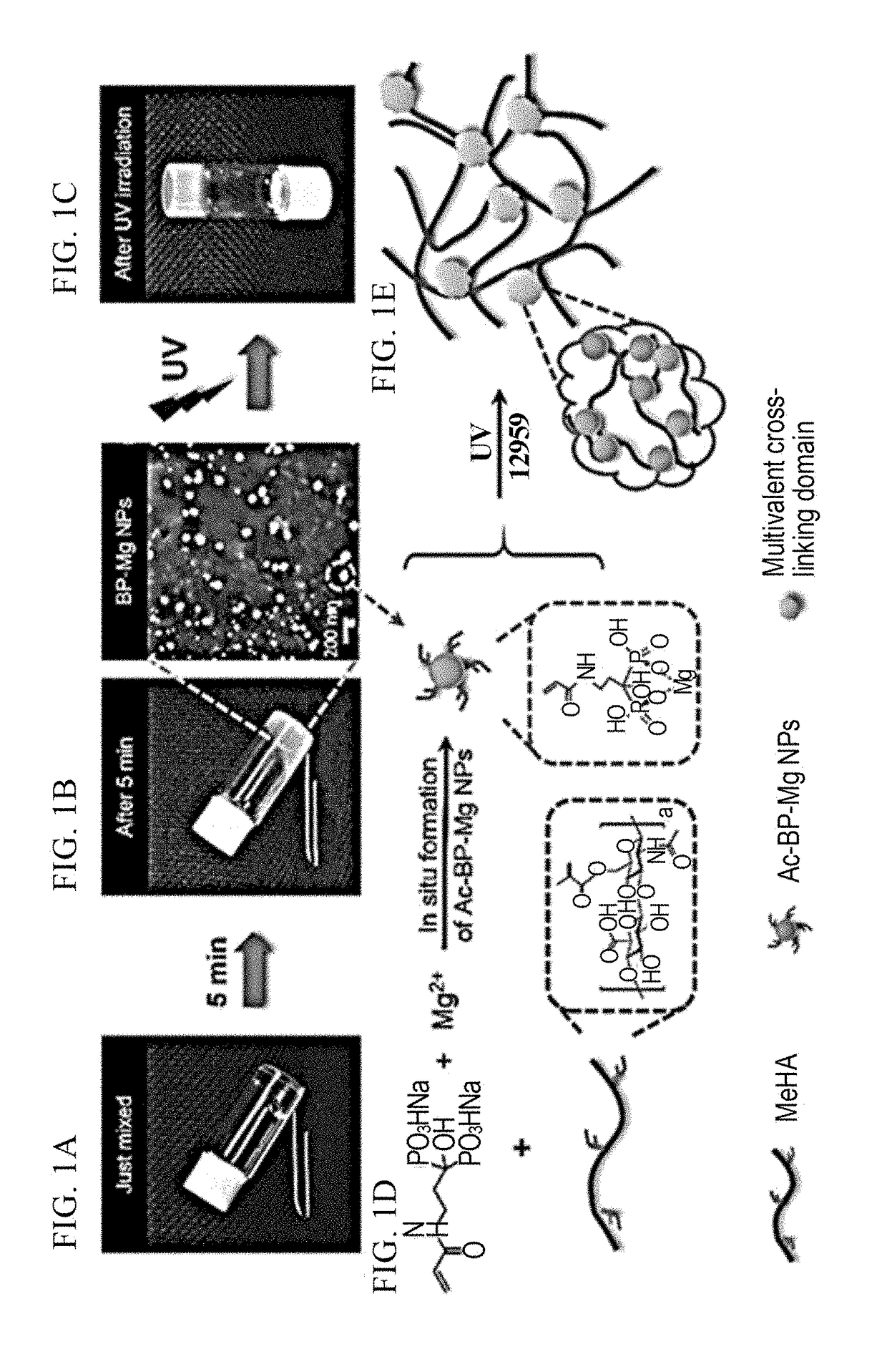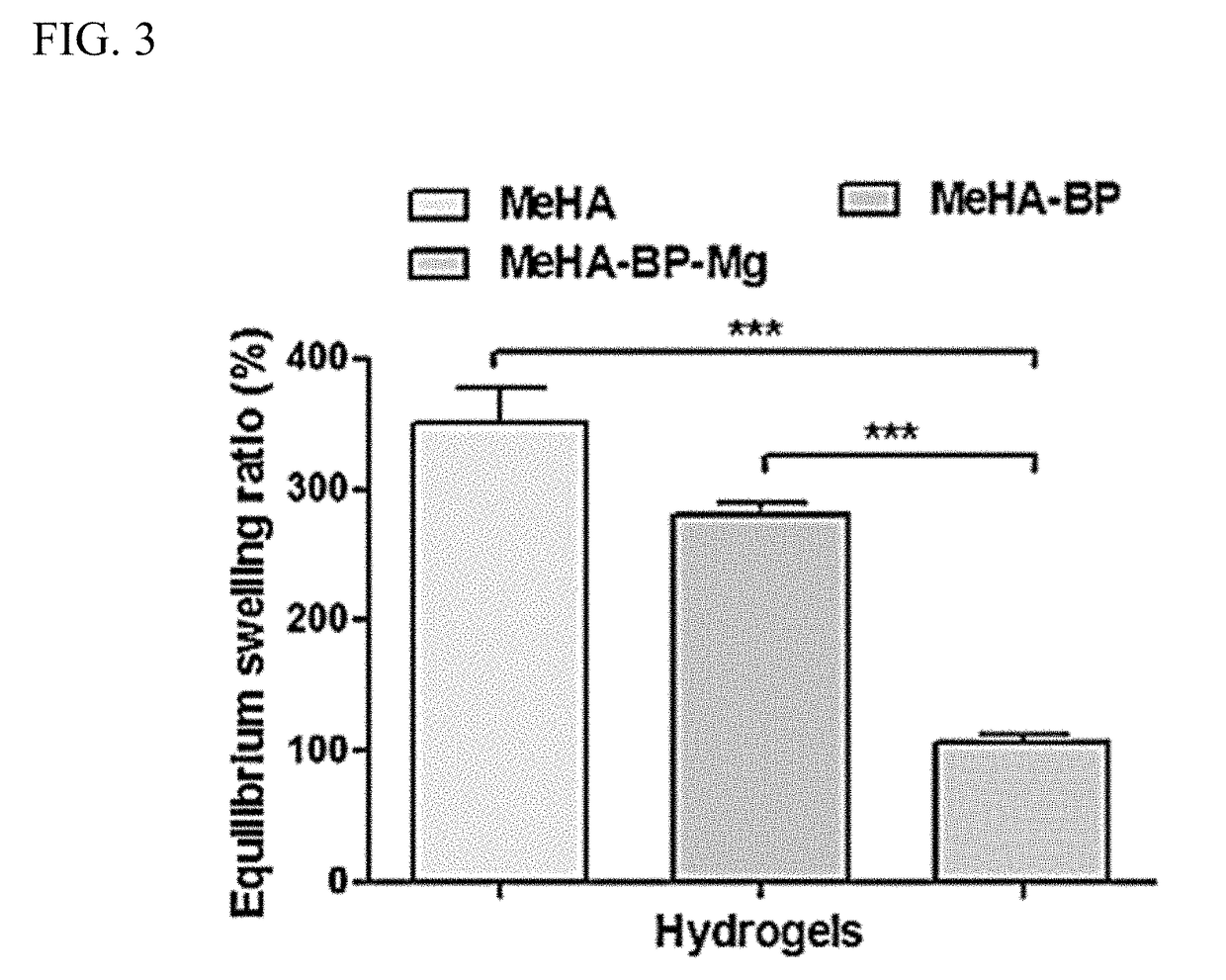Injectable hydrogels that promote mineralization and afford sustained release of bioactive ions
a technology of hydrogels and hydrogels, which is applied in the field of injectable hydrogels that, can solve the problems of inability to mix, bone loss, and undesirable accumulation of degradation-generated hydrogen gas around the implantation site, and achieves the effects of improving the stability and stability of the mixtur
- Summary
- Abstract
- Description
- Claims
- Application Information
AI Technical Summary
Benefits of technology
Problems solved by technology
Method used
Image
Examples
example 1
of Methacrylated Hyaluronic Acid (HA)
[0079]Sodium hyaluronate was dissolved at 1 wt % in deionized water. Methacrylic anhydride was added dropwise with stirring at 4° C. The stirring mixture was maintained at pH 8-8.5 by continuously adding NaOH solution for approximately 8 hours. The mixture was dialyzed against NaCl solution and deionized water for 3 days, respectively, and then frozen at −80° C., lyophilized, and stored at −20° C. in powder form.
example 2
of Acrylated Bisphosphonate (Ac—BP)
[0080]N-acryloxysuccinimide and pamidronate disodium salt were dissolved together in NaOH solution (pH=8.0) and stirred for reaction. After 24 hours reaction at room temperature, the crude product was precipitated from water upon the addition of absolute ethanol. The precipitate was collected by centrifugation and washed with ethanol several times.
example 3
on of MeHA-BP—Mg Hybrid Hydrogels
[0081]Methacrylated HA (MeHA) was synthesized by a simple esterification reaction, and the degree of substitution determined by 1H NMR to be approximately 100%. The simple mixing of MeHA, Ac—BP, and MgCl2 solutions leads to the formation of the Ac—BP—Mg NP suspension in the MeHA solution within 5 minutes due to the rapid chelation between BP and Mg2+. Subsequent UV-initiated polymerization of the free acrylate groups on the surface of the Ac—BP—Mg NPs and the methacrylate groups on the polymer chains produces the photo-crosslinked MeHA-BP—Mg hybrid hydrogels. The Ac—BP—Mg NPs are randomly crosslinked to each other or to the polymer chains and form micrometer sized micro-domains. These micro-domains formed by the clustering of the Ac—BP—Mg NPs act as the multivalent cross-linking domains to help stabilize the hydrogel network.
[0082]A schematic illustration of the fabrication of the MeHA-BP—Mg hybrid hydrogels is presented in FIG. 1. The transparent pr...
PUM
| Property | Measurement | Unit |
|---|---|---|
| diameter | aaaaa | aaaaa |
| diameter | aaaaa | aaaaa |
| pH | aaaaa | aaaaa |
Abstract
Description
Claims
Application Information
 Login to View More
Login to View More - R&D
- Intellectual Property
- Life Sciences
- Materials
- Tech Scout
- Unparalleled Data Quality
- Higher Quality Content
- 60% Fewer Hallucinations
Browse by: Latest US Patents, China's latest patents, Technical Efficacy Thesaurus, Application Domain, Technology Topic, Popular Technical Reports.
© 2025 PatSnap. All rights reserved.Legal|Privacy policy|Modern Slavery Act Transparency Statement|Sitemap|About US| Contact US: help@patsnap.com



